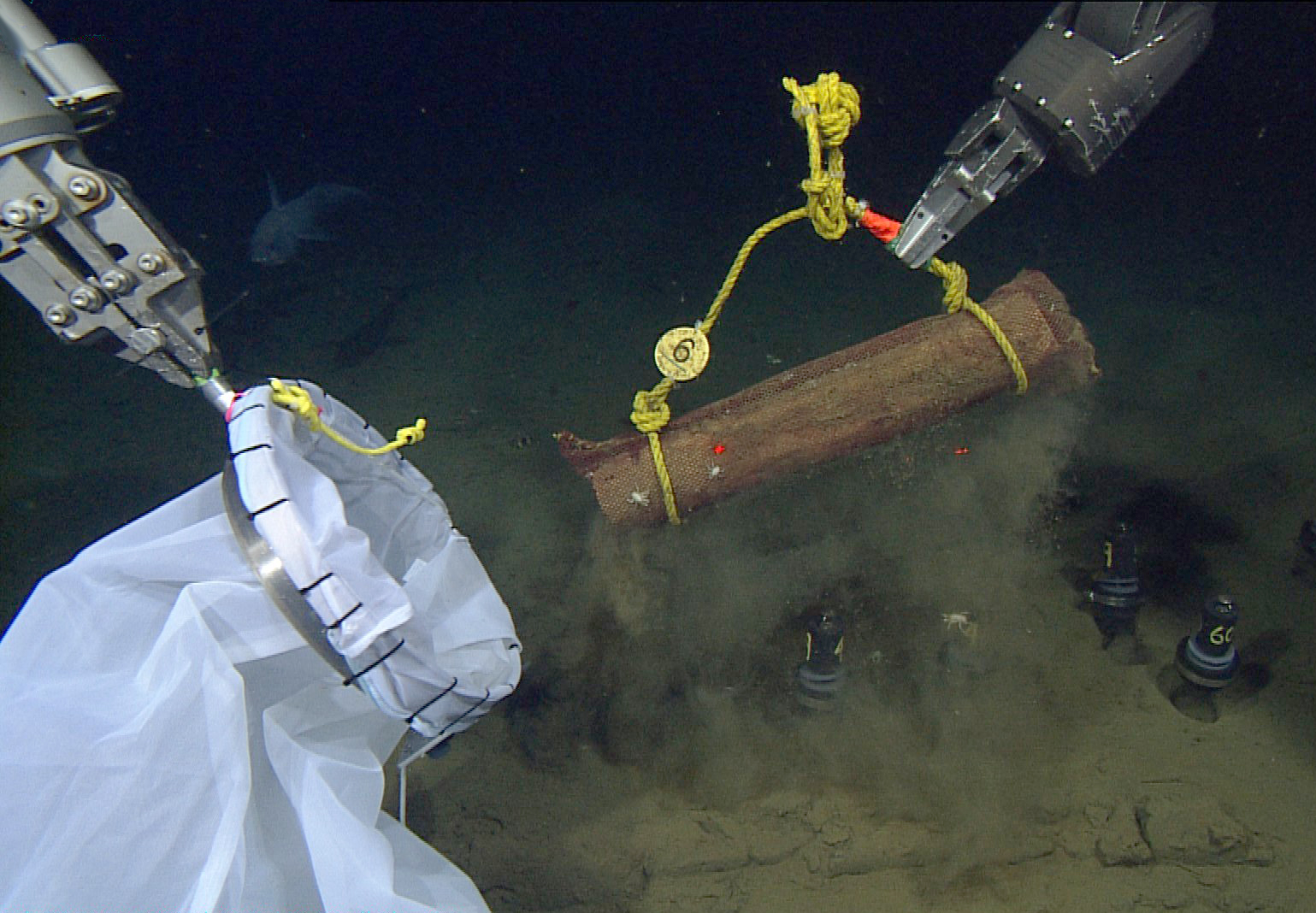NEWS AND EVENTS
Diverse animal communities contain similar animals
new research suggests that animals with closely-related lifestyles get ‘packed’ into ecosystems with abundant resources
New research using logs dropped into the deep sea explains how animals can live side by side even when they’re competing with each other for an essential resource: food. While it’s been clear for decades that more resources support an ecosystem with more diverse life, scientists are still studying how exactly this occurs.
Imagine a car lot. Is the car lot filled with hatchbacks, some in red, some with a sport package, and some with no radio? Or is the car lot filled with hatchbacks, trucks, vans, and sedans?
In nature, does having more resources increase diversity because organisms with closely-related lifestyles (variations on a main theme) get packed into an ecosystem? Or does having more resources increase diversity because specialists can fit into high-resource ecosystems?
A new study shows that the similar-style, variations-on-a-theme explanation is more likely.
A resource-rich ecosystem results in less competition among organisms who have closely-related lifestyles, suggests research done by a team including Dr. Craig McClain and Dr. Clifton Nunnally of the Louisiana Universities Marine Consortium (LUMCON), Abbie Chapman of the University of Southampton, and Dr. James Barry of the Monterey Bay Aquarium Research Institute.
The scientists cut logs as if preparing them for a fire, then wrapped them in mesh and attached a rope handle to each. They used remotely-controlled deep-sea robots to place the logs in a grid on the seafloor, 2 miles beneath the ocean’s surface. After 5 years, they scooped up each log and everything living on them.

Researchers use the two manipulator arms on the Monterey Bay Aquarium Research Institute’s remotely operated vehicle Doc Ricketts to collect a bundle of acacia wood 3,200 meters below the surface of Monterey Bay. The arm on the right has picked up the wood bundle by its yellow rope handle. This bundle will be placed inside the white collecting bag being held by the arm on the left. © 2012 MBARI
The team related original log size to the number and type of invertebrate animals on the log when it was collected. Because the deep sea is a food desert, the animals found on each log were guaranteed to be eating only that log or the organisms attracted to it. Animals on larger logs experienced ‘niche packing’- they “squeezed” into the community because there were more resources to go around, even for very similar organisms using resources in very similar ways.
McClain describes the experiment as “building new worlds [out of] little log cabins hosting a cornucopia of sea life.” He says that the results can be scaled up to the entire ocean: “The oceans are becoming warmer, more acidic, and less oxygenated. They may also be providing less food and carbon for their residents. What will happen to ocean life under these conditions? We cannot easily and experimentally adjust how much food a swath of ocean gets, but we can change the amount of food these deep-sea communities receive by simply adjusting the size of the log we give them.”
This is only one of several large-scale experiments that McClain has deployed in the deep-sea, including an ambitious project using 200 logs currently underway in the Gulf of Mexico and funded by the National Science Foundation. Weighing logs before they are deployed allows McClain and his colleagues to precisely measure the amount of food available to the deep-sea communities that are attracted to those logs.
Biodiversity, or biological diversity, is the number and variety of different living things in a given place. Biodiversity can be measured on a number of scales, from genes to species to ecosystems. Understanding how biodiversity changes and what causes such changes is important for preserving ecosystems as we know them and, consequently, the environmental resources that people use and the lifestyles we lead.
This study was funded by the Monterey Bay Aquarium Research Institute and the National Science Foundation and is published in Biology Letters: Energetic increases lead to niche packing in deep-sea wood falls.
For more details and information on past wood fall experiments, visit http://craigmcclain.com.
